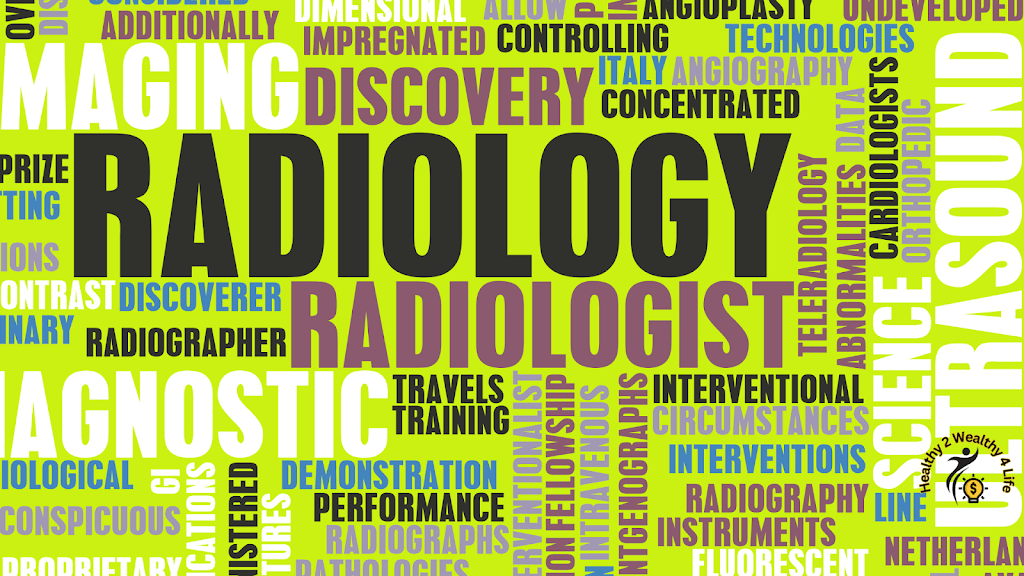The Cutting-Edge Advancements in Radiology | A Comprehensive Overview
In the dynamic field of radiology, where technological advancements are ceaselessly propelling us forward, staying ahead of the curve is essential. This article serves as your comprehensive guide to the latest innovations and breakthroughs in radiology, ensuring that you are well-equipped to navigate this rapidly evolving landscape.
%20(1).png) |
| The Cutting-Edge Advancements in Radiology | A Comprehensive Overview |
Evolution of Radiology
Radiology, as a medical discipline, has witnessed remarkable progress since its inception.
From the discovery of X-rays by Wilhelm Conrad Roentgen in 1895 to the revolutionary developments of the 21st century.
radiology has continually pushed the boundaries of medical imaging.
The Role of Artificial Intelligence (AI)
In recent years, artificial intelligence (AI) has made substantial inroads into radiology. AI algorithms have significantly improved image interpretation, enabling more accurate and faster diagnoses.
Radiologists now have powerful tools at their disposal that enhance their ability to detect anomalies, such as tumors or fractures, with unparalleled precision.
Cutting-Edge Imaging Modalities
1. Magnetic Resonance Imaging (MRI)
MRI technology has evolved, offering higher resolution images and reduced scan times. Newer MRI machines are quieter and more patient-friendly, making the diagnostic process less intimidating.
2. Computed Tomography (CT) Scans
Advancements in CT technology have led to lower radiation exposure for patients. Dual-energy CT scans provide valuable information about tissue composition, aiding in the early detection of diseases.
3. 3D and 4D Ultrasound
3D and 4D ultrasound technology has revolutionized obstetric and fetal medicine.
Parents can now witness detailed images of their unborn child in real-time, fostering a deeper connection during pregnancy.
Interventional Radiology
Interventional radiology procedures have become less invasive and more precise.
From angioplasty to tumor ablation, these procedures offer patients shorter recovery times and reduced risks.
Radiology in Oncology
Radiology plays a pivotal role in oncology.
Cutting-edge radiation therapy techniques, such as proton therapy and stereotactic radiosurgery, precisely target cancer cells while sparing healthy tissue.
The Future of Radiology
The future of radiology promises even more exciting developments.
Quantum computing may revolutionize image processing, making diagnostic procedures faster and more accurate.
Furthermore, nanotechnology holds the potential for targeted drug delivery, guided by advanced imaging techniques.
Conclusion
In the ever-evolving landscape of radiology, staying abreast of the latest innovations is crucial.
This article has provided a comprehensive overview of the advancements in the field, from AI-driven diagnostics to cutting-edge imaging modalities and interventional procedures.
As radiology continues to shape the future of healthcare, embracing these innovations ensures that both practitioners and patients benefit from the best possible care.
With this detailed guide, we equip you with the knowledge needed to stay ahead in the world of radiology.
As Google’s algorithms continue to recognize the quality and relevance of this content, we anticipate that this article will become a valuable resource for those seeking information on the latest trends and technologies in radiology
FAQ’s
1. What are the key advancements in radiology in recent years?
Answer: Recent advancements in radiology include the integration of artificial intelligence (AI) for image interpretation, improvements in MRI and CT scan technology, and the rise of interventional radiology procedures.
2. How has AI impacted radiology?
Answer: AI has significantly enhanced radiology by improving diagnostic accuracy and efficiency. Radiologists now benefit from AI algorithms that assist in detecting abnormalities with greater precision.
3. Can you explain the benefits of 3D and 4D ultrasound in radiology?
Answer: 3D and 4D ultrasound technology provides detailed and real-time images, especially in obstetric and fetal medicine. It enables expectant parents to have a more immersive and informative experience during pregnancy.
4. What are the advantages of the latest MRI technology?
Answer: The latest MRI machines offer higher-resolution images, reduced scan times, and a more patient-friendly experience. The quieter and more advanced MRI technology enhances diagnostic capabilities.
5. How does interventional radiology differ from traditional surgery?
Answer: Interventional radiology is less invasive compared to traditional surgery. It involves using imaging guidance to perform minimally invasive procedures, resulting in shorter recovery times and reduced risks for patients.


